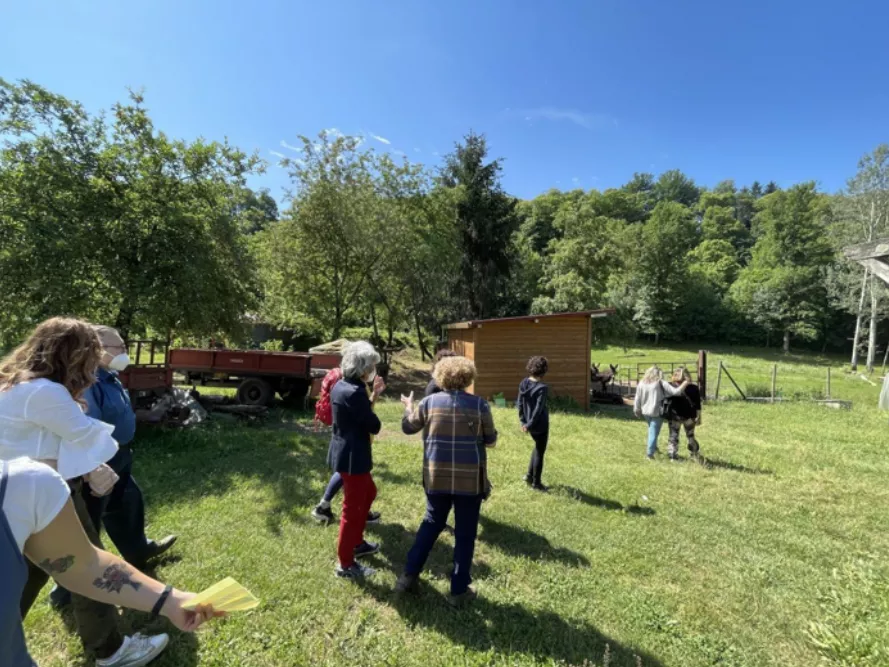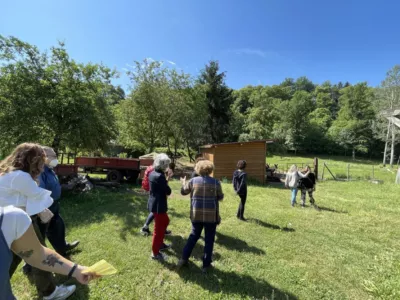Summary
Local Action Groups (LAGs) in rural Tuscany play a crucial role in supporting Italy's National Strategy for Inner Areas (SNAI) by providing capacity building to public authorities and beneficiaries, and engaging local stakeholders.
Through an integrated governance model, LAGs cooperate with municipalities and ensure synergies between their local development strategies and the SNAI. The model has maximised funding opportunities and led to improvements in transport, healthcare, and education.
Results
The main result of the coordinated implementation of the SNAI and the LEADER programme is the maximisation of funding opportunities to meet the objectives of both initiatives.
During the period 2014-2022, the SNAI financed around 30 projects for public entities and around 60 projects for private bodies in north-western Tuscany.
The upgrade of the Castelnuovo di Garfagnana station illustrates the coordination and complementarity between SNAI and LEADER. Interventions under the SNAI included upgrading facilities, providing widespread Wi-Fi connection, adapting car parks and connected services, constructing protected parking and waiting spaces, rationalising access roads, installing new lighting, and setting up interactive information points and e-mobility options.
Concurrently, LAG Montagnappennino supported the creation of a tourist information centre for the Garfagnana and Media Valle del Serchio area through a grant to the municipality. The synergy and integration of funds have transformed the Castelnuovo di Garfagnana station into an innovative and multifunctional mobility hub for the region.
Resources
Documents
Context
The Montagnappennino and Lunigiana LAGs are located in the north-western part of Tuscany, spanning the mountainous regions of the Apennines and the Apuan Alps. This area faces significant challenges such as depopulation, uneven distribution of commercial services particularly affecting historical centres, and a lack of generational renewal in entrepreneurship.
Italy's National Strategy for Inner Areas (SNAI) is an innovative policy to promote development and territorial cohesion and combat marginalisation and demographic decline in the country's inner regions. The 2014-2020 SNAI introduced a multi-level governance system involving regions, municipalities, and inter-municipal cooperation.
In rural Montagnappennino and Lunigiana, LAGs have been involved in participatory processes and have been responsible for developing and implementing LEADER strategies since the 1990s. The two LAGs cooperate with the municipalities implementing the SNAI in the region through a multi-sector approach and an integrated governance model to ensure synergies.
Objectives
-
Strengthen the role of the LAGs in the implementation of the SNAI;
-
Support bottom-up community projects that address local needs, while contributing to broader regional and national goals;
-
Enhance the efficiency of resource allocation by leveraging both LEADER and SNAI funding for maximum impact.
Activities, key actors, and timeline
The governance system implemented by the Montagnappennino and Lunigiana LAGs ensures effective synergies between the LEADER programme and SNAI through a well-coordinated and collaborative approach.
-
LAGs develop their local development strategies (LDS) based on local needs and opportunities. They support bottom-up projects carried out mainly by communities, entrepreneurs, micro and small enterprises, associations, and citizens.
-
The Inner Areas Strategy supports structural projects implemented by public bodies, including municipalities, schools, and provinces, focusing on land conservation, soil erosion prevention, public mobility, education and training, local development, and health and welfare services.
-
The SNAI adopts a multi-fund approach, using the European Agricultural Fund for Rural Development (EAFRD), European Regional Development Fund (ERDF), European Social Fund (ESF), and national funds to address its objectives.
-
The SNAI in north-western Tuscany is managed by a union of four municipalities. The union has established a steering committee consisting of mayors who politically guide the strategy, and an office that manages it.
-
SNAI projects are implemented in cooperation with LAG managers. Moreover, the Montagnappennino and Lunigiana LAGs support the SNAI by providing technical assistance, including training on the management of funds, writing calls for proposals and engaging actors of the territory in the process.
-
The managers of the two LAGs support the steering committee office managers to ensure the operationalisation of the funding strategies and projects. In addition to the LAGs budget from the LEADER programme, they also manage the EAFRD portion of the SNAI for the period 2022-2027, amounting to 1 million euros, based on their own local development strategy.
-
The LAGs carefully select and fund projects using both LEADER and SNAI funding, focusing on complementary infrastructure improvements, sustainable economic activities, and enhanced social services.
Success factors/lessons learnt
SNAI’s participatory approach to local development and multi-level governance model involving national, regional, and local entities are key to the success of the SNAI-LEADER coordination. The multi-fund approach, incorporating EAFRD, ERDF, ESF, and national funds, has further strengthened the sustainability of the practice.
However, this type of coordination, based on multi-level governance and participatory approach, can present challenges, particularly in aligning timelines and managing differences among various stakeholders.
This practice is highly replicable due to the widespread presence of LAGs across Europe and their core principle of facilitating participatory approaches to local development. The practice highlights the importance of integrated governance, effective use of multiple funding sources, and need for flexibility in managing diverse stakeholder interests.
Contacts
Mirta Sutter, Community Manager, gal@montagnappennino.it, + 39 3487964136

